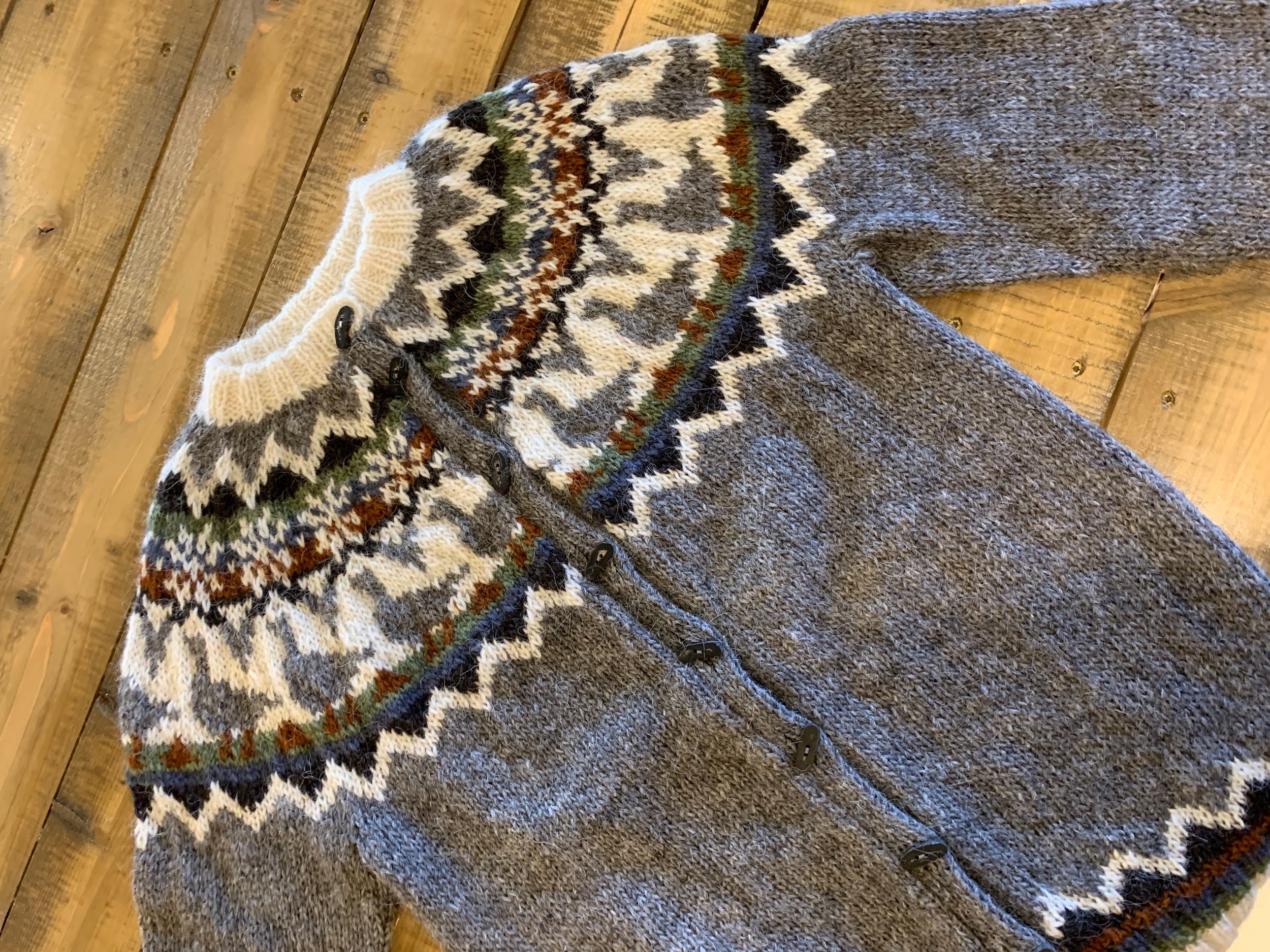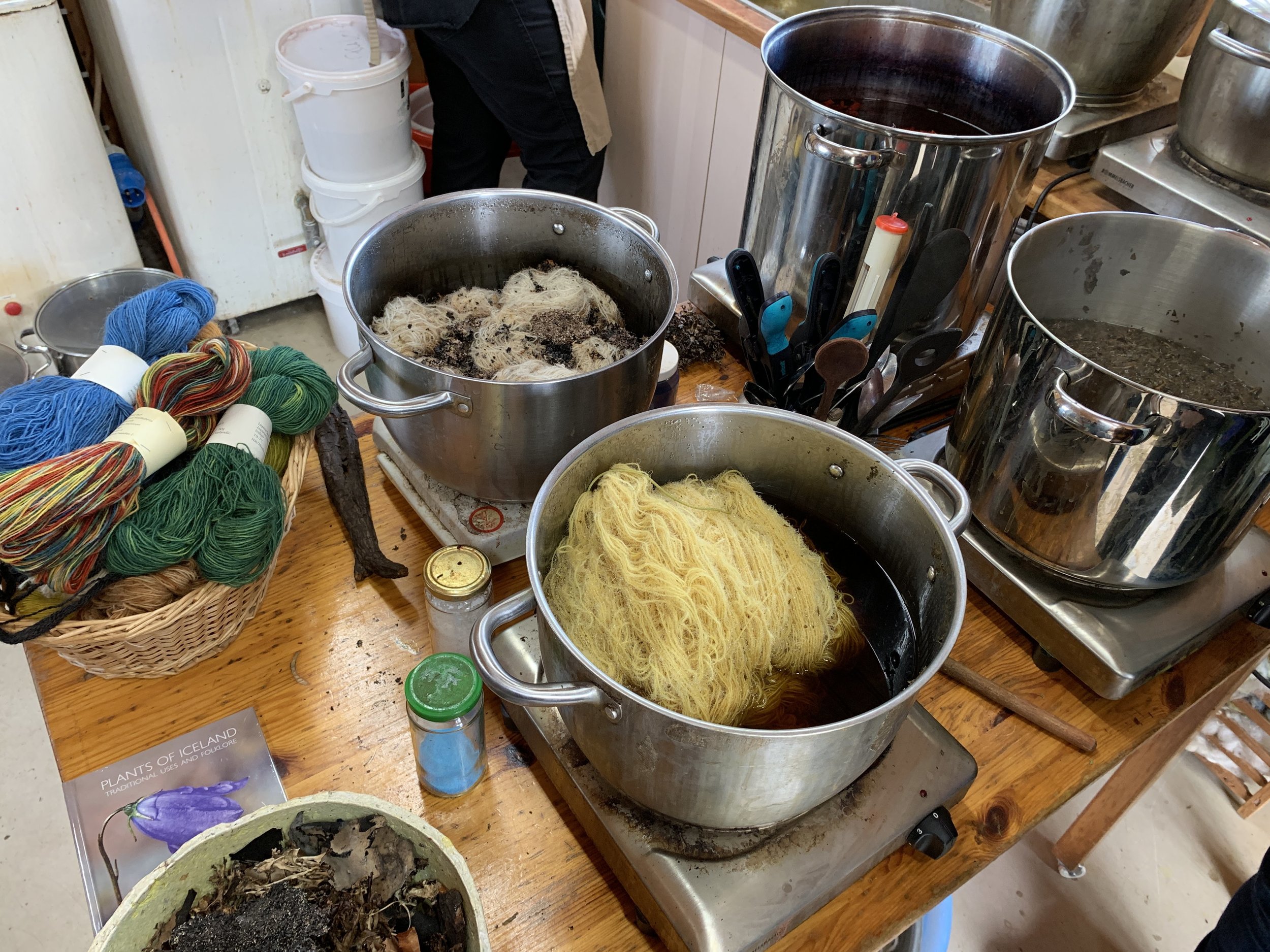
The next morning, we were to meet Helene at 9 to get out of the city, and so the majority of us came down for breakfast around 8 AM. I met all of the ladies who would be journeying together: Brenda from the Netherlands, Pennie and Phillippa from the UK, Kris from Denmark, and Brigitte from France. I unknowingly outed myself as an American right away by eating an apple with peanut butter for breakfast (apparently a very American thing to do) and visited with everyone a little bit before collecting our things to load up!
Helene arrived in the most beautiful green cardigan and lacy shawl, exclaiming that she dressed for spring but couldn’t believe how hot it was (this was a theme of the week, apparently temperatures in the 50s in May were QUITE unusual for Iceland. We saw a few lupines on our drive that day and she was so surprised, she couldn’t believe it.) Our small crew loaded on a small tourist bus and began the drive towards Highway 1, which loops all the way around the country. As we drove, Helene told us all about the geologic history and answered a bunch of our questions about the history, culture, and agriculture of the country. A vast majority of the food that is eaten in the country is imported due to the harsh climate, but I was amazed at all that she shared about the ingenious ways that farmers have learned to cope with rocky soils, long winters, and an incredibly short growing season.
We were all, I think, taken aback by the views already. Whenever someone has asked me how I found Iceland since this trip, I always think of this moment on the first day when we drove out of Reykjavik. The plains, flat and grassy with almost no trees, giving away in a moment to towering, dark mountains whose peaks were completely obscured by the clouds. It made me think of God, and for a while I sat there in wonder at it all.
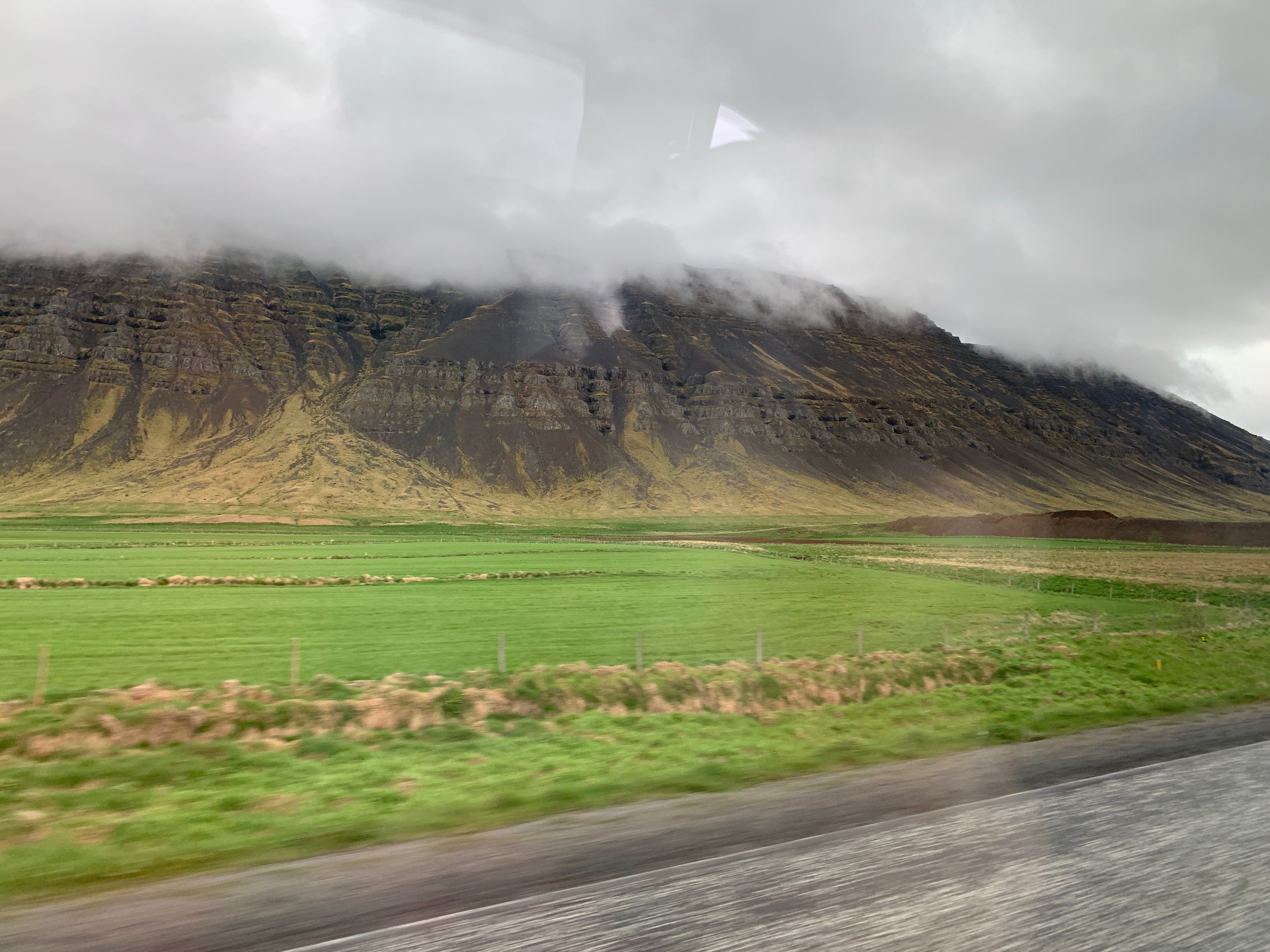
Of course, we were only just beginning. We stopped for our lunches, to be taken on the road, at a small cafe on the edge of Borgarnes and after travelling through the longest tunnel I think I have ever seen, which cuts across an enormous body of water and makes the journey just 45 minutes instead of 2.5 hours between the cities. The first day was a touring day, and we had a lot to see!
Our first stop after Borgarnes was to a farm owned by a lovely craftswoman named Rita, who had farmed all her life and spoke mostly Icelandic. She and her family raised sheep for many years and now focus mainly on dyeing and sheep-related crafts, including the making of buttons, needles, jewelry and tools out of Icelandic sheep horns. She had worked to source naturally-colored Icelandic fleeces beyond the traditional and easy-to-dye white in shades of fawn, chocolate, and even black. The purchases began. :) She also treated us to small glasses of bilberry juice, or wild blueberry juice, intensely sweet and delicious, while we spent some time on her homestead.
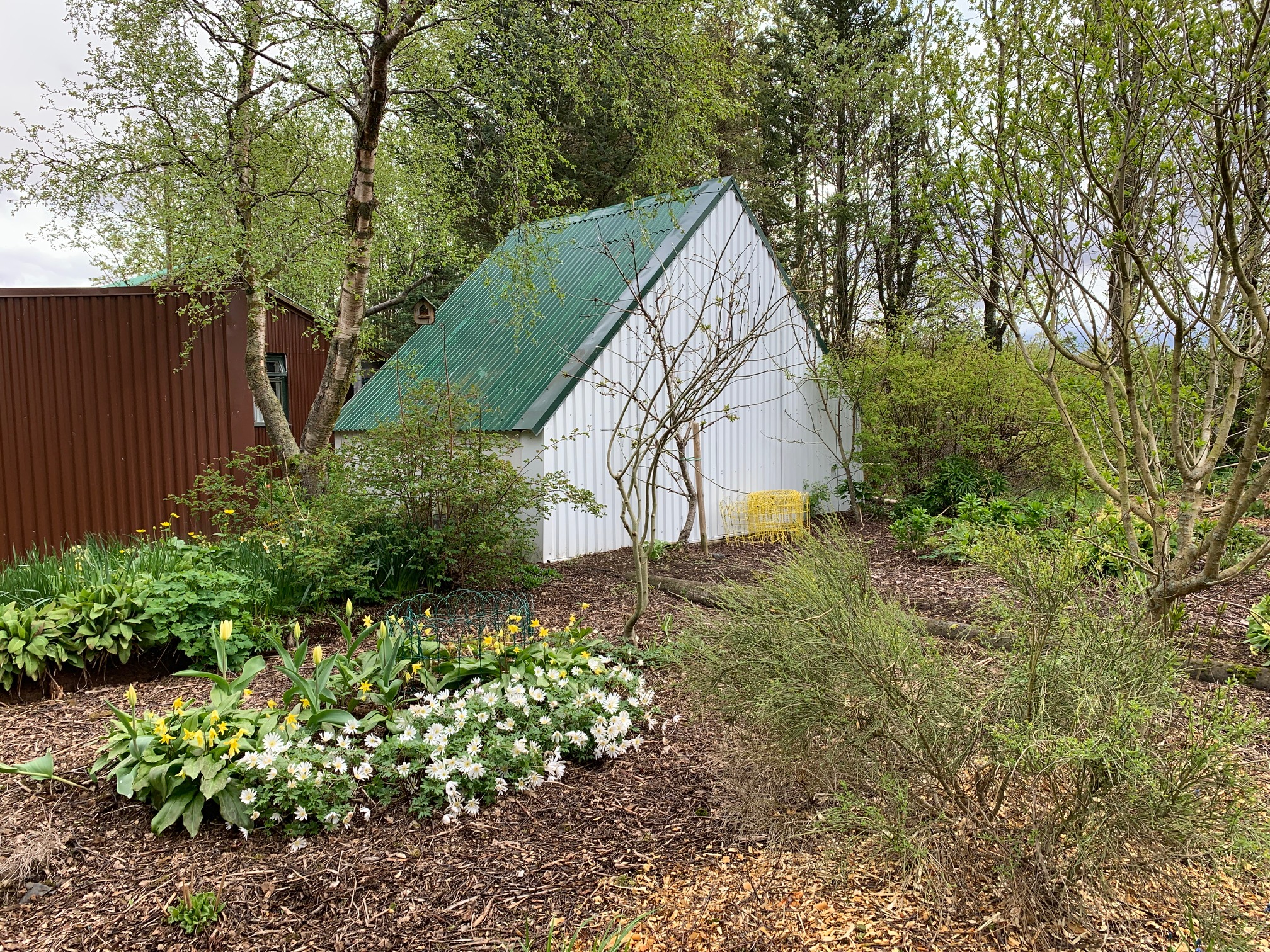
From Rita’s farm, we visited the country store and Wool Collective in the Borgarfjörður region. Composed entirely of individual artisans, makers, farmers, and dyers who directly benefit from the sales of their handcrafted wool goods, it was incredible, and a privilege to support. In an era of increasingly industrialized and outsourced souvenirs, I was very excited for the opportunity to directly support the people and crafts that made this country so special. A few naturally-dyed mini skeins made it into my shopping basket, each individually labeled with the person who dyed the wool, and the materials with which it was dyed. The region also boasts its own lopapeysa sweater completely original and representative of its culture which could only be purchased at the store. I love those little ducks!
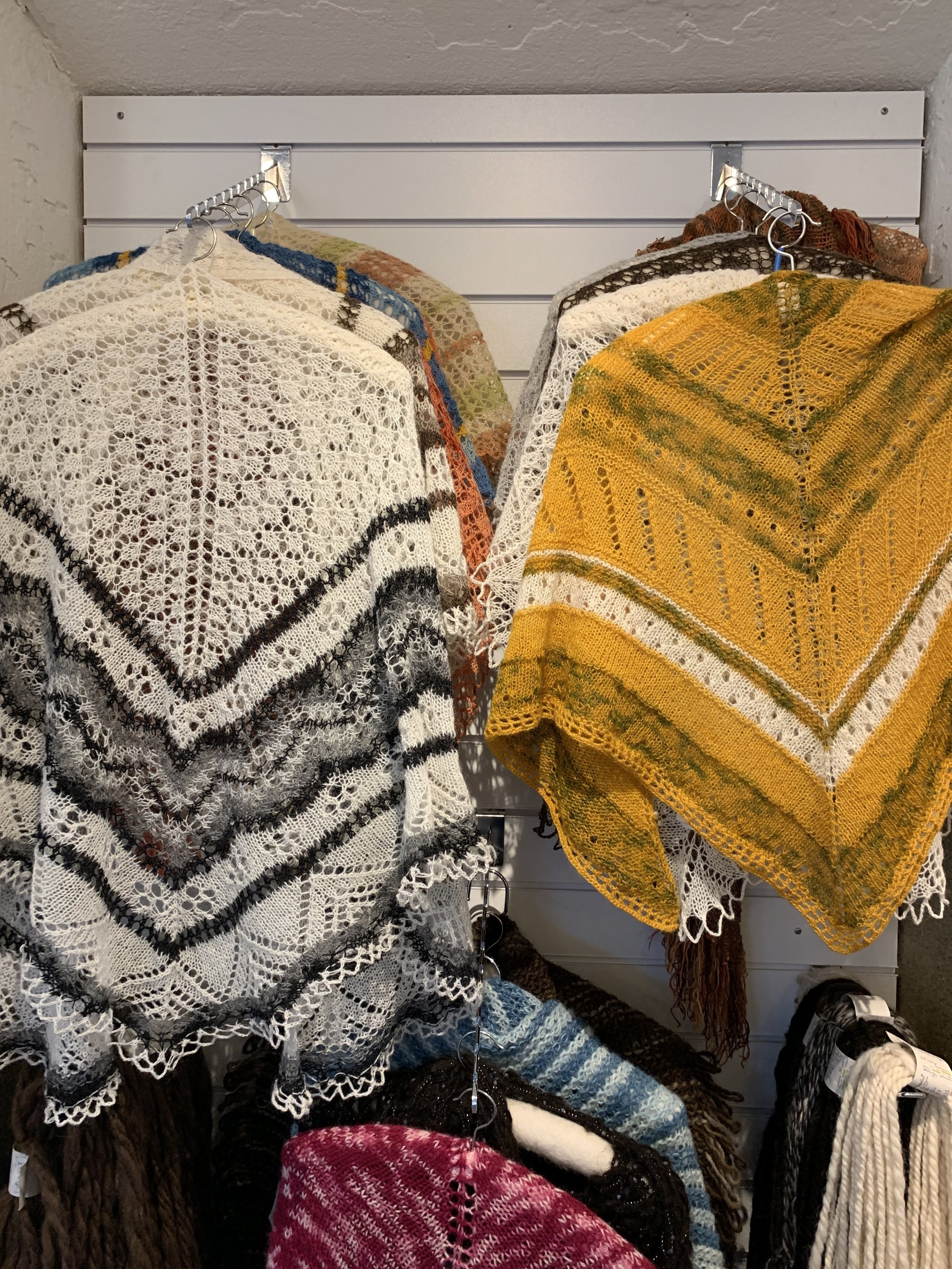
After we had seen everything, and with promises of more treasures ahead, we drove to the home and studio of Gudrun Bjarnadóttir. Gudrun provided us with an in-depth history and look at her natural dye process to make her Hespa yarn. (This is a wonderful interview that Tolt Yarn & Wool did with Gudrun a few years ago.) A botany professor by trade, Gudrun began naturally dyeing Icelandic wool using traditional methods that combined all of her interests and passions. She taught us all about how she learned how to adapt traditional methods for a modern kitchen (subbing ammonia for sheep’s urine, for example) and her love of the craft. In her pots that day were yarns being dyed with Icelandic moss (actually a lichen), lupine leaves, rhubarb root and some non-native species that have a long history in Iceland including madder, indigo and cochineal.

Gudrun was so patient and attentive to our questions, and you could tell she has a real passion and a love for Iceland, its history, and her craft. She joined us for our bakery lunch of sandwiches with ham and hardboiled eggs (a new cuisine for me, but not for my European counterparts), fried “love balls” (donuts with raisins and cardamom) and an iced Danish. Her studio door opened up to more mountain views, chickens walking around contentedly, and a cool breeze. I could have stayed there forever. It was so special for me to see how deeply rooted natural dyeing is to the culture and history of Iceland and made my own experiences with natural dyes in my kitchen at home seem much more connected to a larger history and culture of extracting beauty from nature for our day-to-day lives.
In Iceland, one of the best and craziest things I figured out while traveling is how you can be on your way to some destination, and just so happen to be in the same vicinity as a waterfall fed by a northern glacier that was originally carved in its place by lava flows. (Is this real life?) So was the case with Husafell. I couldn’t believe my eyes.

Our final stop for the day (as if the day had not already been one of the most incredible of my life) was at the Háafell goat farm. Goats, we would come to learn, have been largely persecuted and under-resourced in a country obsessed with sheep, almost to the point of Johanna. 16 years ago, Johanna made it her mission to save these animals and thanks to her incredible determination, a well-timed Indiegogo campaign and Game of Thrones, the goats survive to this day. In fact, a new baby goat had just been born a few hours before our arrival.
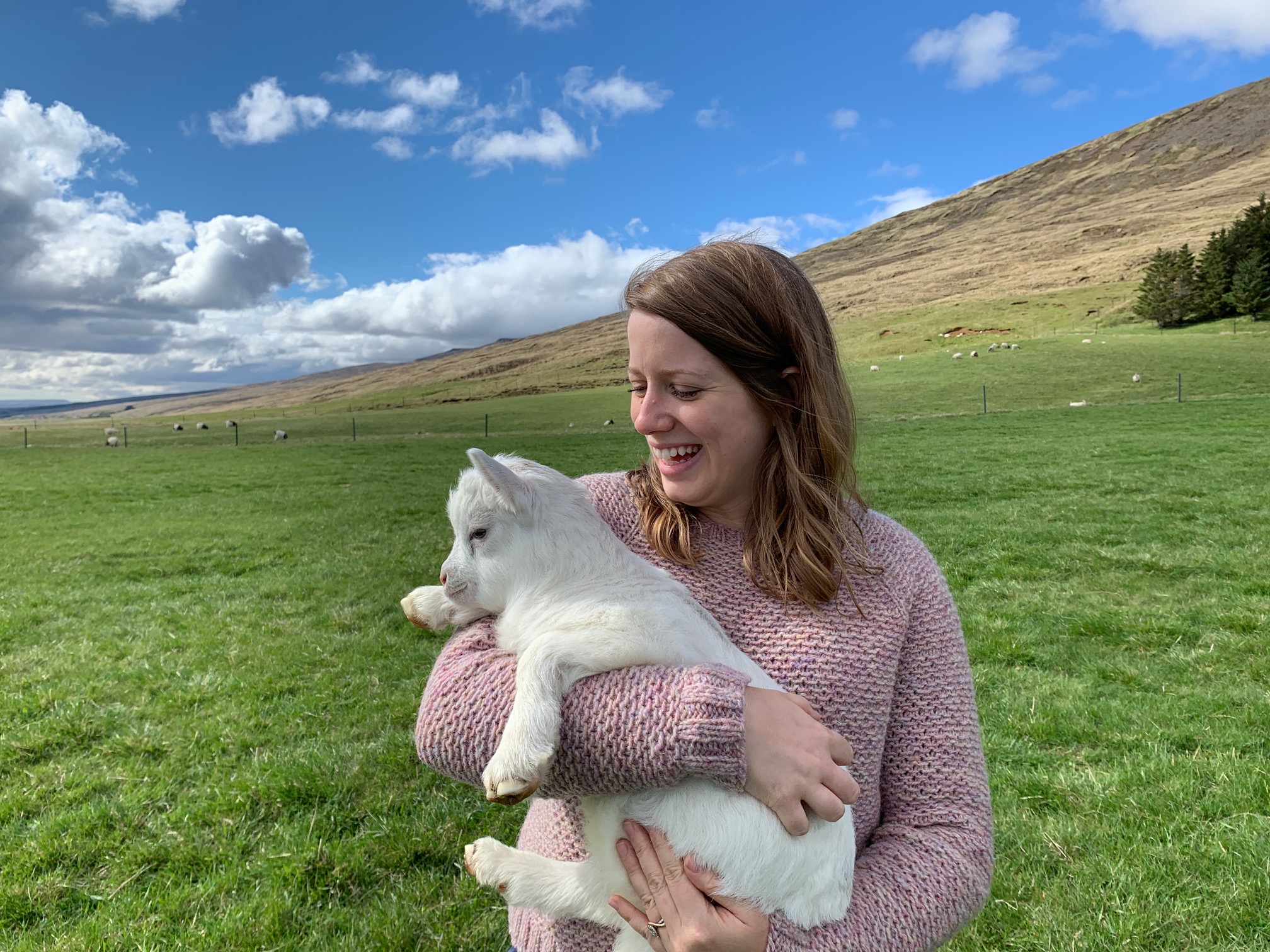
Just outside our lodging for the next few days, an incredible crater that we climbed to the top and where we squished our hands in the most lush moss you’ve ever seen.

Much earned at the end of our day, a beautiful meal in a restaurant where the sun never set and where we remarked on our exhilarating and exhausting day. The next day we would stay in our country hotel for the first day of our workshops!
